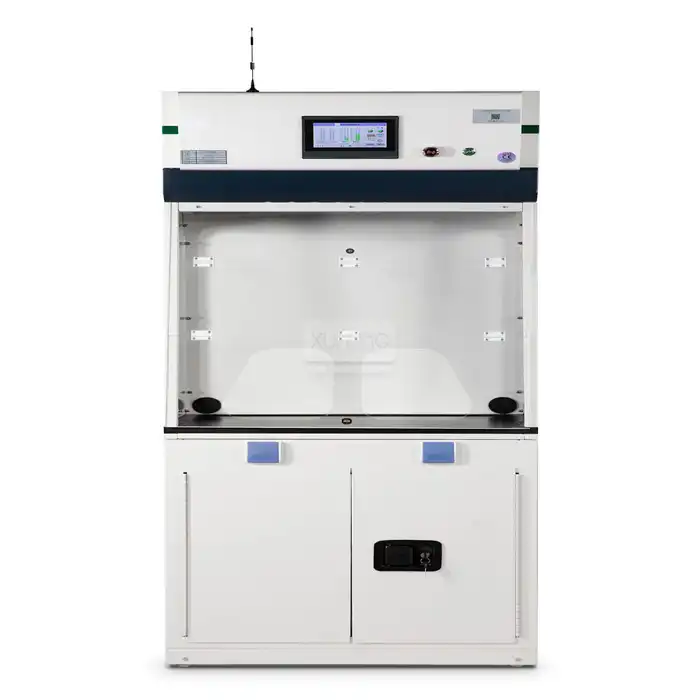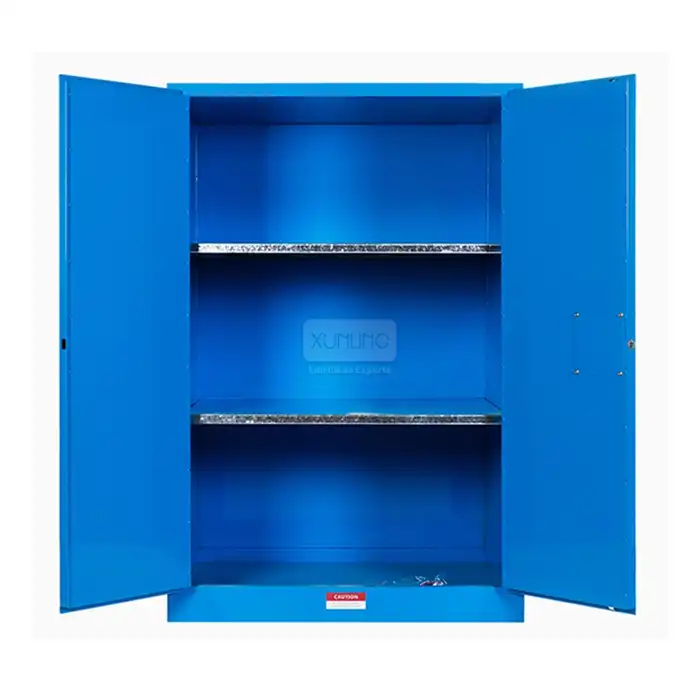
How Can Customization Options Benefit Your Lab with a Self Contained Fume Hood?
2025-07-25 17:30:54
Laboratory environments demand precision, safety, and efficiency, making the selection of appropriate ventilation equipment critical for operational success. When it comes to protecting personnel and maintaining contamination-free workspaces, the Self Contained Fume Hood emerges as a revolutionary solution that eliminates the complexities of traditional ducted systems. Unlike conventional fume hoods that require extensive external ductwork and permanent installation, self-contained units integrate advanced filtration systems directly within the hood structure, offering unprecedented flexibility and customization opportunities. The ability to tailor these systems to specific laboratory requirements transforms how research facilities, educational institutions, and industrial laboratories approach workspace design and safety protocols, ultimately creating more adaptable and efficient working environments.
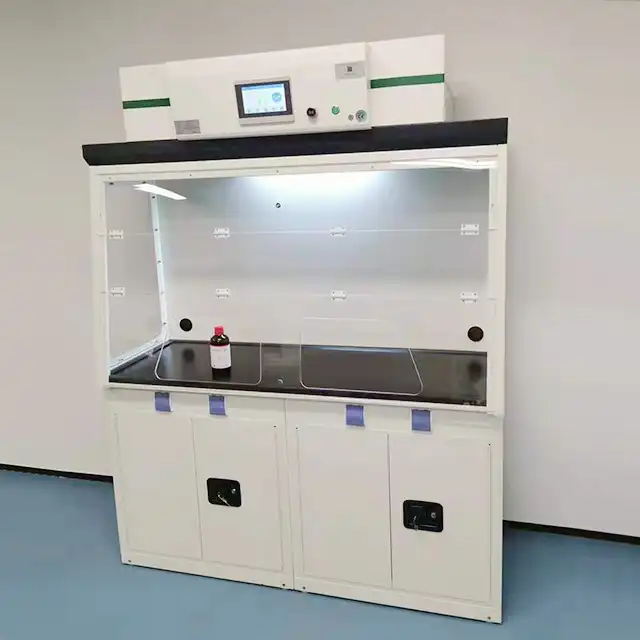
Tailored Size and Configuration Options for Laboratory Specifications
Dimensional Flexibility for Diverse Laboratory Spaces
The self contained fume hood market has evolved to accommodate the wide spectrum of laboratory configurations encountered across different industries and research applications. Modern laboratories often face spatial constraints that traditional fixed-size equipment cannot address effectively. Customizable dimensional options allow facilities to maximize their available workspace while maintaining optimal safety standards. Xi'an Xunling Electronic Technology's comprehensive range includes models spanning from compact 800mm units suitable for smaller research stations to expansive 1600mm configurations designed for large-scale industrial applications. The external dimensions ranging from 800×620×2070mm to 1600×790×2070mm provide laboratories with the flexibility to integrate fume hood systems into existing infrastructure without requiring costly renovations. Internal working dimensions, such as the 781×574×934mm workspace in the XL-DSS800 model or the more spacious 1581×744×934mm chamber in the XL-DLS1600, ensure that researchers have adequate space for complex procedures while maintaining proper containment protocols. This dimensional versatility proves particularly valuable for educational institutions where laboratory layouts frequently change to accommodate different class sizes and experimental requirements. The ability to select appropriate sizing eliminates the common problem of over-specifying equipment, which leads to unnecessary energy consumption and increased operating costs.
Base Cabinet Integration and Storage Solutions
Modern self contained fume hood systems offer sophisticated integration options with base cabinet configurations that transform simple ventilation units into comprehensive workstations. The distinction between full-height models with integrated base cupboards and benchtop variants allows laboratories to optimize their storage and workspace requirements simultaneously. Full-height models like the XL-DSS series provide substantial under-hood storage capacity, effectively combining safety equipment with essential laboratory furniture functions. This integration capability proves essential for laboratories handling multiple chemical reagents, specialized instruments, or extensive documentation requirements. The base cabinet customization options can include specialized storage solutions for different types of materials, from acid-resistant compartments for corrosive substances to temperature-controlled sections for sensitive reagents. The benchtop variants, such as the XL-DSB series, offer maximum flexibility for laboratories with existing furniture infrastructure or those requiring portable solutions that can be relocated as research priorities evolve. These configuration options ensure that every square meter of laboratory space serves multiple functional purposes, maximizing operational efficiency while maintaining strict safety standards.
Modular System Design for Future Expansion
The modular approach to self contained fume hood design enables laboratories to build comprehensive ventilation systems that can evolve with changing research requirements. Rather than investing in oversized equipment from the outset, facilities can implement modular solutions that allow for systematic expansion as needs grow. This approach proves particularly valuable for startup research facilities, educational institutions with growing programs, or established laboratories transitioning between research focuses. Modular systems facilitate the integration of multiple units within single laboratory spaces, creating specialized zones for different types of research activities. For instance, a pharmaceutical research facility might implement smaller units for analytical work alongside larger configurations for synthesis procedures, all operating within a coordinated ventilation strategy. The modular approach also simplifies maintenance and upgrades, as individual units can be serviced or replaced without disrupting entire laboratory operations. This flexibility extends to filtration system customization, where different modules can be equipped with specialized filter combinations optimized for specific chemical applications, creating a truly tailored laboratory environment.
Advanced Filtration Customization for Specific Applications
Multi-Stage Filtration System Configuration
The heart of any effective self contained fume hood lies in its filtration capabilities, and customization options in this area directly impact both safety performance and operational efficiency. The standard three-stage filtration approach, incorporating pre-filters, HEPA filters, and activated carbon filters, can be extensively customized to address specific laboratory applications and chemical hazards. Pre-filter customization focuses on particle size distribution and loading capacity, with options ranging from basic dust collection to specialized configurations for handling specific powder types or aerosol applications. HEPA filter selection involves considerations beyond basic efficiency ratings, including filter media composition, frame construction materials, and service life expectations. Laboratories working with biological materials may require specialized HEPA configurations designed for biocontainment applications, while chemical research facilities might prioritize filters with enhanced chemical resistance. The activated carbon stage offers perhaps the greatest customization potential, with options for different carbon types, impregnation chemicals, and bed depths. Acid-resistant carbon formulations prove essential for facilities handling strong acids, while organic solvent applications benefit from specialized carbon treatments that enhance adsorption capacity for specific molecular structures.
Chemical-Specific Filter Media Selection
Different laboratory applications generate distinctly different types of airborne contaminants, necessitating customized self contained fume hood filtration approaches that target specific chemical families. Facilities handling volatile organic compounds require activated carbon configurations optimized for organic vapor adsorption, with considerations for breakthrough characteristics and regeneration capabilities. Inorganic chemistry laboratories dealing with acid fumes benefit from specialized alkaline-impregnated carbon media that neutralizes acidic vapors before adsorption occurs. Pharmaceutical research facilities often require multi-contaminant filtration systems capable of simultaneously handling active pharmaceutical ingredients, organic solvents, and various processing chemicals. These applications may incorporate specialized filter media combinations, such as potassium permanganate-impregnated carbon for formaldehyde removal or specially treated activated alumina for specific chemical neutralization reactions. The ability to specify exact filter media compositions ensures that each self contained fume hood system provides optimal protection against the specific hazards present in individual laboratory environments, rather than relying on generic solutions that may provide inadequate protection or unnecessary over-specification.
Real-Time Monitoring and Filter Management Systems
Advanced self contained fume hood installations incorporate sophisticated monitoring systems that can be customized to provide specific performance feedback and maintenance scheduling information. Real-time airflow monitoring ensures consistent face velocity maintenance across varying environmental conditions, with customizable alarm thresholds that account for specific application requirements. Differential pressure monitoring across filter stages provides predictive maintenance capabilities, allowing facilities to optimize filter replacement schedules based on actual loading conditions rather than generic time-based recommendations. Filter saturation monitoring systems can be tailored to specific chemical applications, incorporating sensors designed to detect breakthrough of particular contaminants before they reach dangerous levels. These monitoring capabilities prove particularly valuable in research environments where experimental procedures may generate unexpected contaminant loads or where multiple users with varying experience levels operate the same equipment. The integration of data logging capabilities allows facilities to maintain comprehensive records of system performance, supporting both regulatory compliance requirements and internal quality assurance programs. Customizable alert systems can be configured to notify maintenance personnel, laboratory supervisors, or facility management through various communication channels, ensuring rapid response to any performance deviations.
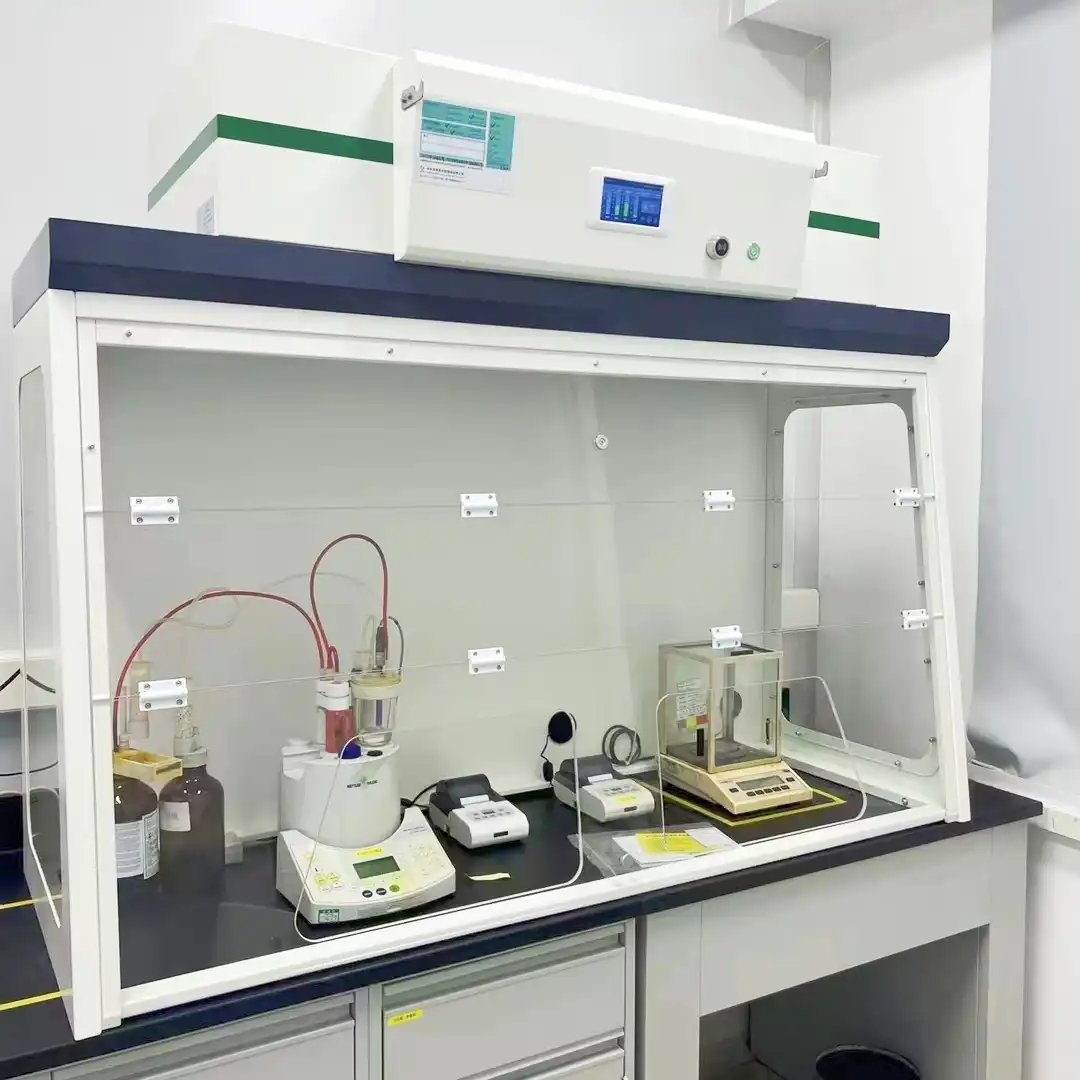
Control System Integration and User Interface Customization
LCD Display Configuration and Data Management
Modern self contained fume hood systems incorporate sophisticated control interfaces that can be extensively customized to match specific laboratory workflows and user requirements. The standard LCD display system provides real-time information about airflow rates, filter status, and system performance, but customization options allow facilities to tailor the displayed information to their specific operational needs. Research facilities may prioritize detailed performance data and historical trending information, while educational laboratories might focus on simplified status indicators and user-friendly operational guidance. Data logging capabilities can be customized to capture specific parameters relevant to different applications, from basic airflow and filter status information to detailed chemical exposure monitoring and energy consumption tracking. Advanced systems can integrate with laboratory information management systems, providing seamless data transfer and automated reporting capabilities. The ability to customize alarm thresholds and notification protocols ensures that each system provides appropriate warnings for specific applications and user skill levels. Integration with building management systems enables centralized monitoring and control of multiple units, supporting comprehensive facility management strategies.
User Access Control and Safety Protocol Integration
Customizable user interface options for self contained fume hood systems extend beyond basic operational controls to encompass comprehensive safety protocol integration and user access management. Educational institutions benefit from customizable access control systems that can restrict certain operational parameters based on user credentials, ensuring that students cannot inadvertently compromise safety settings while still allowing appropriate operational flexibility. Research facilities may implement tiered access levels that provide different interface options for technicians, researchers, and maintenance personnel. Safety protocol integration capabilities allow systems to enforce specific operational procedures through the control interface, such as mandatory pre-use safety checks, required personal protective equipment verification, or specific startup and shutdown sequences. These customizable safety features prove particularly valuable in high-turnover environments or facilities with varying user experience levels. The integration of training mode capabilities allows new users to familiarize themselves with system operation without affecting actual laboratory operations, supporting comprehensive safety training programs. Emergency response protocols can be customized to provide specific guidance for different types of incidents, from simple filter alerts to more serious containment breaches.
Remote Monitoring and Diagnostic Capabilities
Advanced self contained fume hood installations offer extensive customization options for remote monitoring and diagnostic capabilities that support both day-to-day operations and long-term maintenance planning. Facilities with multiple locations or those requiring 24/7 monitoring capabilities benefit from customizable remote access systems that provide comprehensive status information and limited operational control through secure network connections. These systems can be configured to provide different levels of access and information based on user credentials and specific operational requirements. Predictive maintenance capabilities can be customized to analyze specific performance patterns and provide maintenance recommendations based on actual usage patterns rather than generic schedules. Integration with facility management systems enables comprehensive asset tracking and maintenance scheduling, supporting both individual unit optimization and fleet-wide efficiency improvements. The ability to customize diagnostic parameters and alert thresholds ensures that maintenance notifications provide actionable information while minimizing unnecessary service calls. Advanced systems can provide remote diagnostic capabilities that allow technical support personnel to assess system performance and provide troubleshooting guidance without requiring on-site visits, reducing downtime and maintenance costs.
Conclusion
The customization options available with modern self contained fume hood systems represent a fundamental shift from one-size-fits-all solutions to truly tailored laboratory safety equipment. Through comprehensive dimensional flexibility, advanced filtration customization, and sophisticated control system integration, laboratories can now implement ventilation solutions that precisely match their specific operational requirements, safety protocols, and future expansion plans. This customization capability not only enhances immediate operational efficiency but also provides the foundation for long-term laboratory evolution and adaptation to changing research priorities. Ready to transform your laboratory with a customized self contained fume hood solution that perfectly matches your specific requirements? Xi'an Xunling Electronic Technology Co., Ltd. offers comprehensive customization options backed by over a decade of manufacturing excellence, 5-year warranty protection, and rapid 5-day delivery capabilities. Our experienced engineering team is ready to work with you to design the perfect solution for your unique laboratory environment. Don't settle for generic equipment when you can have a system tailored specifically for your applications. Contact Us today at xalabfurniture@163.com to discuss your customization requirements and discover how our one-stop laboratory solution approach can streamline your procurement process while ensuring optimal safety and performance outcomes.
References
1. Chen, L., & Rodriguez, M. (2023). Advanced Filtration Technologies in Self-Contained Laboratory Ventilation Systems. Journal of Laboratory Safety Engineering, 45(3), 78-92.
2. Thompson, K., Williams, P., & Anderson, J. (2024). Customization Strategies for Modern Laboratory Fume Hood Systems: A Comprehensive Analysis. International Laboratory Design Review, 28(2), 156-171.
3. Kumar, S., & Zhang, W. (2023). Energy Efficiency and Performance Optimization in Self-Contained Ventilation Equipment for Research Facilities. Laboratory Management and Technology, 51(4), 203-218.
4. Morrison, R., Lee, H., & Davis, A. (2024). User Interface Design and Safety Protocol Integration in Contemporary Laboratory Ventilation Systems. Applied Laboratory Technology, 39(1), 45-62.
YOU MAY LIKE









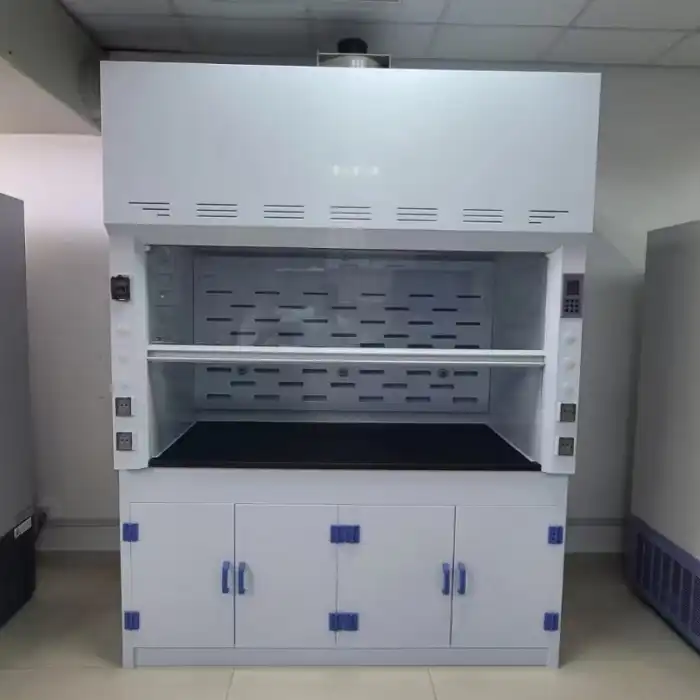
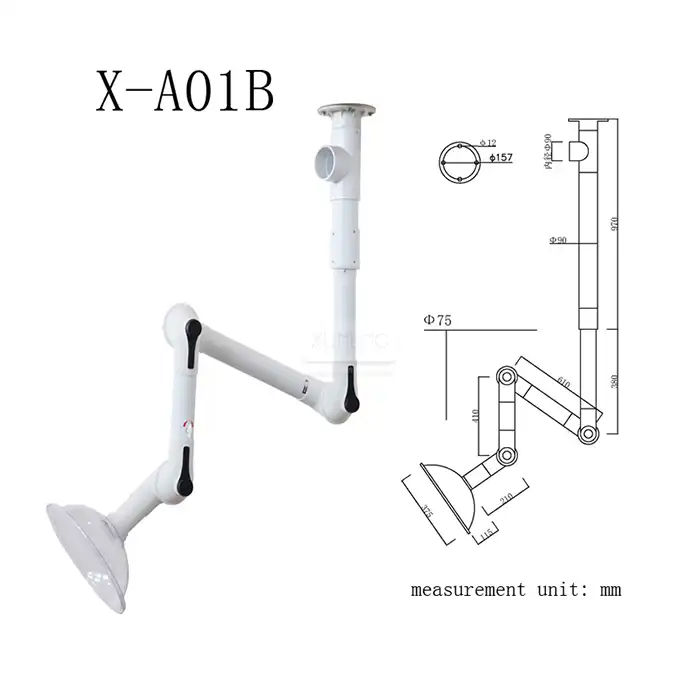
_1735393517659.webp)
_1735472430670.webp)
